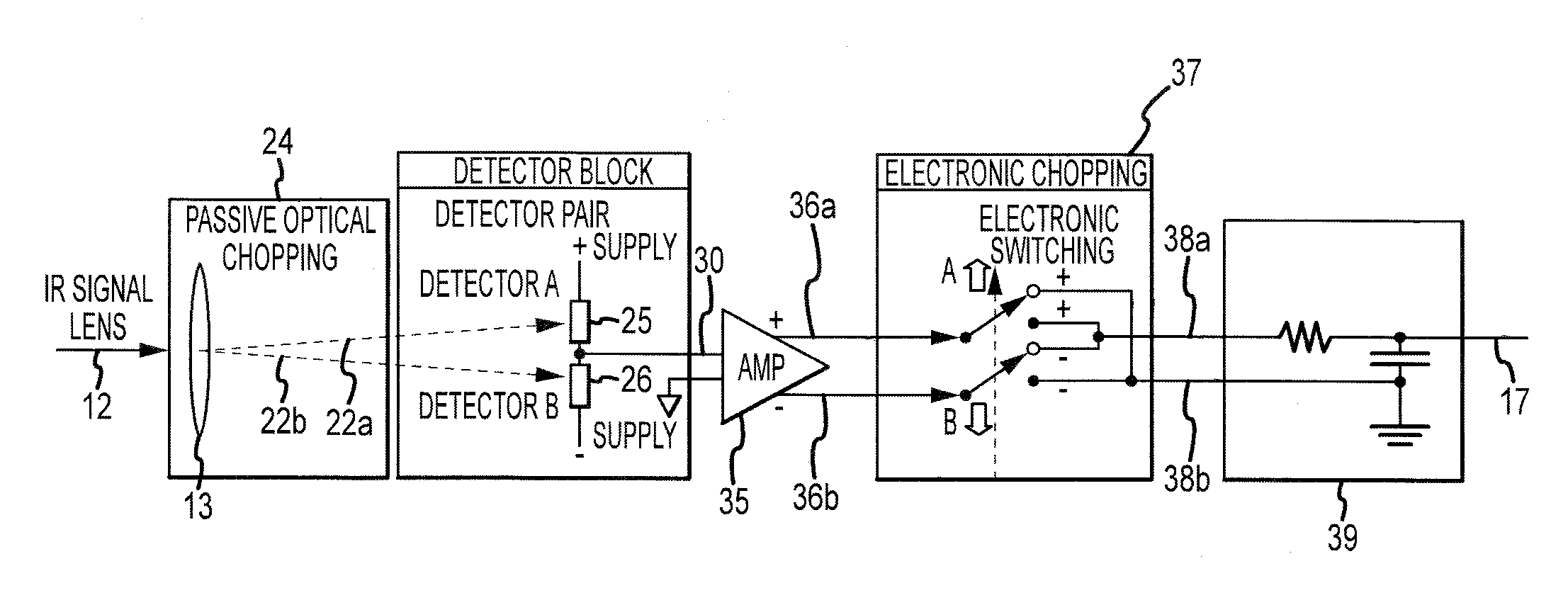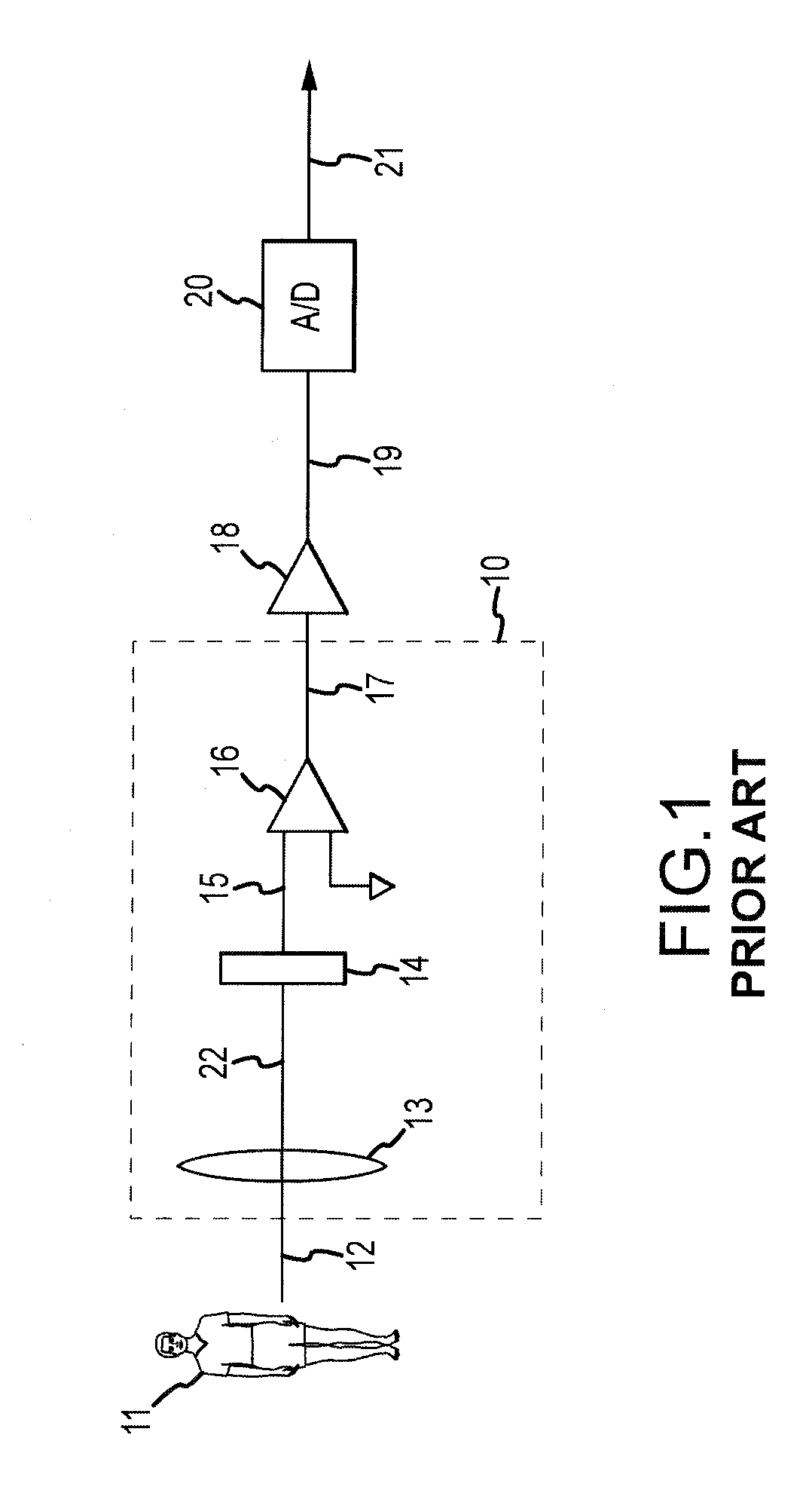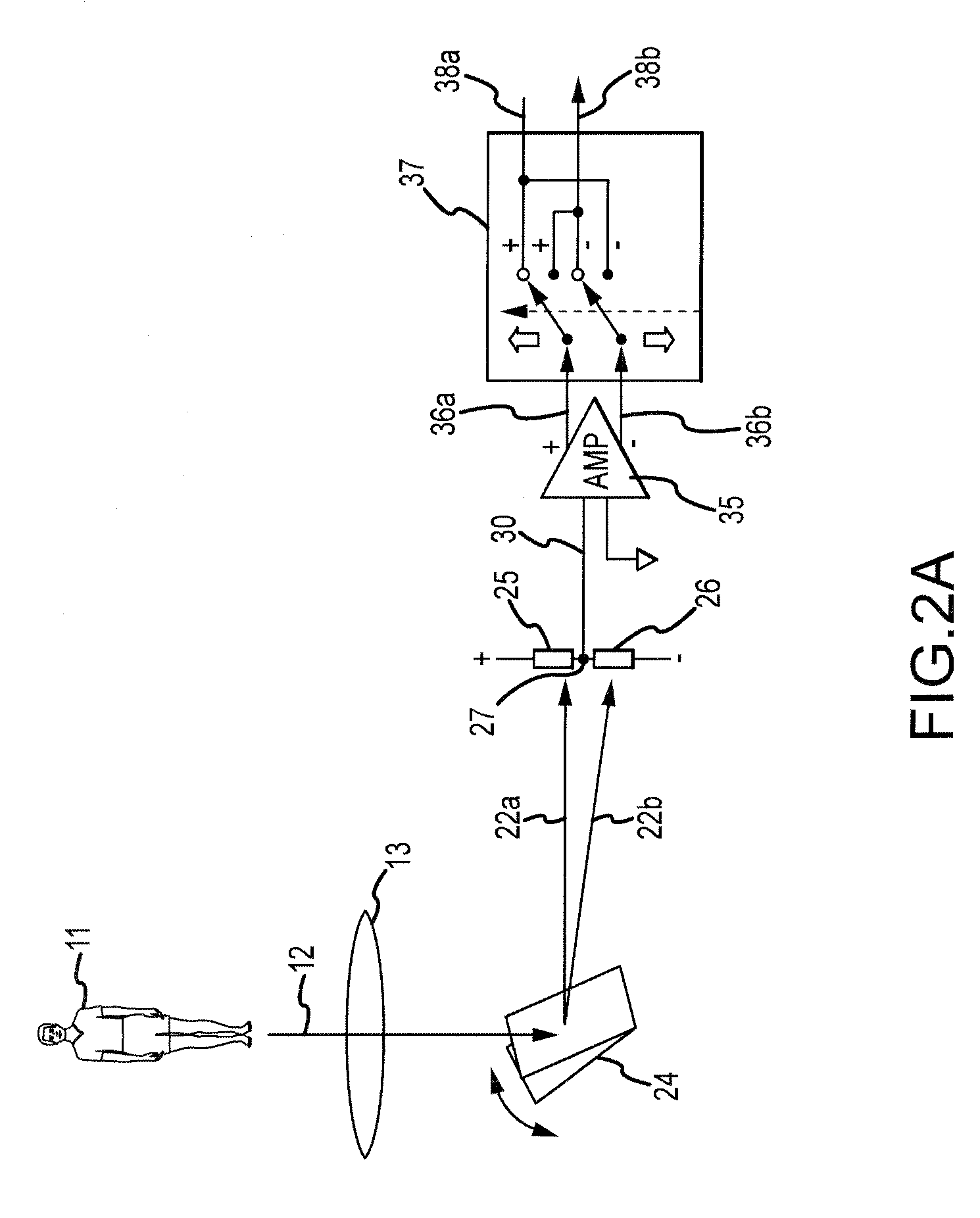System and method for attenuation of electrical noise
a technology of electrical noise and attenuation method, applied in the field of electrical noise attenuation system, can solve the problem of typical generation of significant noise, and achieve the effect of cancelling common background nois
- Summary
- Abstract
- Description
- Claims
- Application Information
AI Technical Summary
Benefits of technology
Problems solved by technology
Method used
Image
Examples
Embodiment Construction
thus include an input signal chopping device to produce at least two input signal components, and at least two detectors or an alternating detector system with opposite polarities to detect the at least two dither chopped input signal components while simultaneously cancelling background signals common to the detectors. Differential signals from the at least two detectors or alternating detector system are then superimposed to create a single detector current signal. A preamplifier is provided to receive that single detector signal, followed by electronic switch means to flip polarity of detected current signal segments, thereby combining and reestablishing the original input. A low pass filter, an amplifier, and an analog-to-digital converter can also be added, resulting in a final digital detection signal.
BRIEF DESCRIPTION OF THE FIGURES
[0013]Features, aspects, and embodiments of the Present Invention are described in conjunction with the attached drawings, in which:
[0014]FIG. 1 i...
PUM
 Login to View More
Login to View More Abstract
Description
Claims
Application Information
 Login to View More
Login to View More - R&D
- Intellectual Property
- Life Sciences
- Materials
- Tech Scout
- Unparalleled Data Quality
- Higher Quality Content
- 60% Fewer Hallucinations
Browse by: Latest US Patents, China's latest patents, Technical Efficacy Thesaurus, Application Domain, Technology Topic, Popular Technical Reports.
© 2025 PatSnap. All rights reserved.Legal|Privacy policy|Modern Slavery Act Transparency Statement|Sitemap|About US| Contact US: help@patsnap.com



